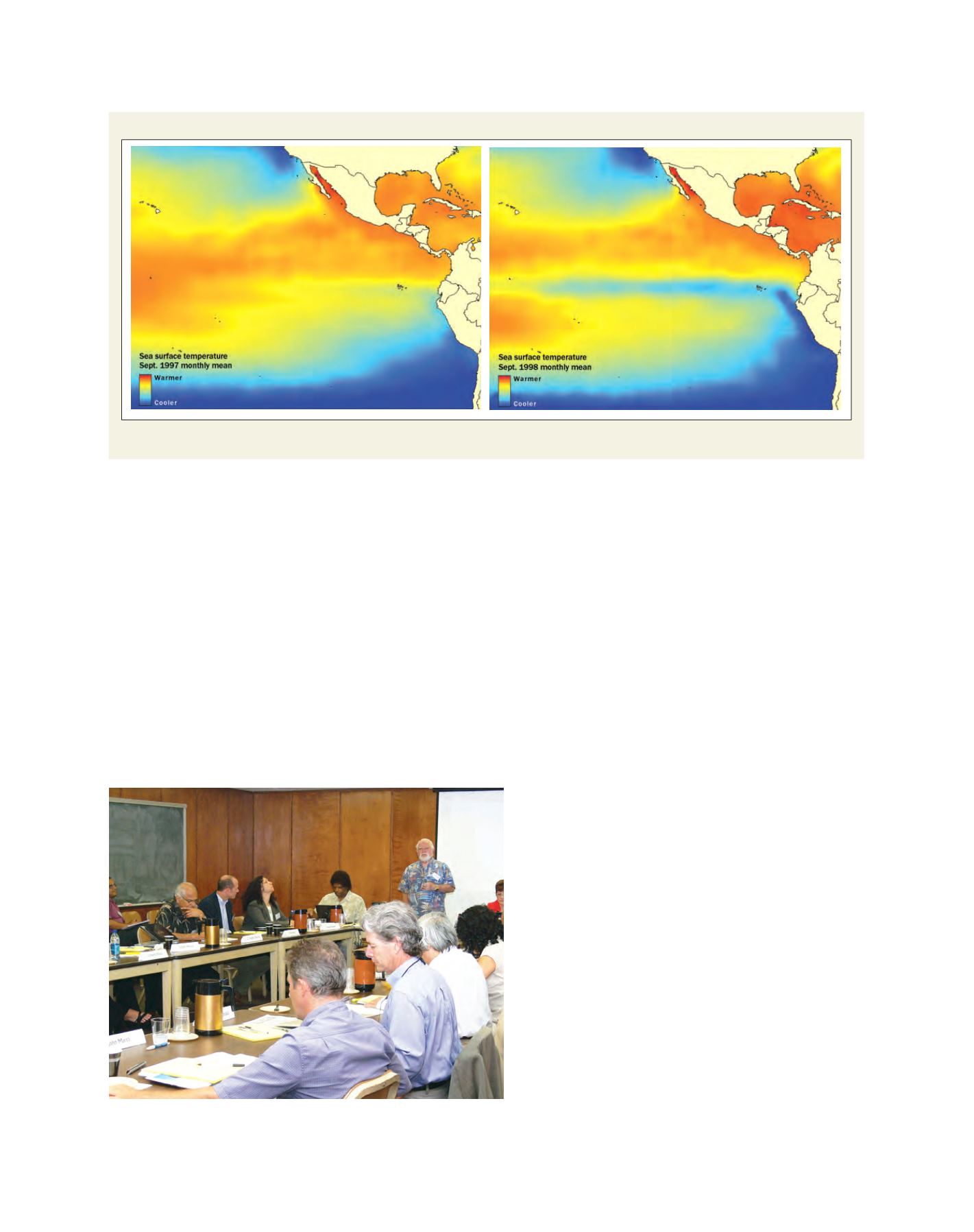

[
] 264
A
dAptAtion
And
M
itigAtion
S
trAtegieS
devastated by floods and malaria-carrying mosquitoes,
eventually resulting in: “some 30,000 cases in the Piura
region alone, three times the average for its 1.5 million
residents.”
Climate variability expectations
Longer-term climatological changes are expected to
contribute to major shifts in environmental conditions
and hazard patterns, affecting all components of risk.
The UN Intergovernmental Panel on Climate Change
(IPCC), which was awarded a 2007 Nobel Prize,
predicted in its Fourth Assessment Report that world
temperatures could rise as much as 6.4ºC (11.5ºF)
during the 21st century, and that sea levels might
rise 18-59 centimetres (7.08-23.22 inches). IPCC also
reported a 90 per cent or greater likelihood that heat
waves and heavy rainfall will increase, and a slightly
lower confidence level associated with increases in
drought, extreme high tides and tropical cyclones.
Many of the places expected to experience the
greatest increases in hazards and the most signifi-
cant changes in environmental conditions have low
or medium human development, have growing popu-
lations, and are experiencing rapid urbanization in
highly exposed areas. In addition to affecting hazard
patterns, changing temperatures and hydrological
conditions will likely impact patterns of water avail-
ability and food production. As such shifts take place,
they will contribute to mass migration, and to health
and security issues.
Globalization (negatively contrasted with regionaliza-
tion by IPCC), along with its associated technologies,
tends to shift the impacts of disaster to widely dispersed
people, changing susceptibility. The same processes,
however, can facilitate effective response and adapta-
tion, and increase capacity.
did not have existing strategies to deal with the changed conditions
or who were unable to adapt to them suffered significantly more
from losses and disruption – including, for example, Northwest
Pacific fishermen.
Others with an understanding of relevant climate information
were able to act on it in ways that reduced susceptibility to impact
or facilitated effective coping. For instance, according to an article
written by Curt Suplee for National Geographic, Peruvian villagers
were not surprised by the tremendously increased rainfall. Fairly
regularly, he wrote: “the same rainfall had arrived after a pool of
hot seawater the size of Canada appeared off the west coast of the
Americas.” Although 1997 was overwhelming even for the experi-
enced villagers in Chato Chico, forcing evacuations, they were still
among the lucky ones compared to other newer villages that were
Sea surface temperature comparisons 1997/98
Sea surface temperatures during the 1997 El Niño (left) contrast with those recorded during the La Niña cycle that began in 1998 (right)
Source: PDC using NOAA Climate Diagnostics Center data
East West Center Senior Fellow Allen Clark addresses participants in the Expert
Working Group Meeting on Climate Change and Variability
Image: Pacific Disaster Center
















